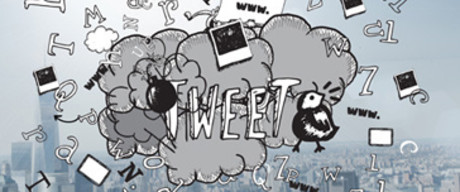
It is now the festive break and a chance (for some of you at least) to catch up on general administration, including updating your Twitter bio. If the latter is not on your to-do list, then hopefully we can give you some reasons as to why it should be.
This is not one of those articles that is going to tell you that you are using Twitter incorrectly. Twitter can be used in a myriad of ways and long may people continue to experiment on the platform; it is what made Twitter great in the first place. But you might like to ask yourself, why, as a journalist, are you on Twitter? What are your goals? Here are some you might like to consider:
-
To be findable – by location, subject area, name, publication title.
-
To be credible – you are more likely than most to be the eyewitness at a breaking news event so it could pay to be easily verifiable.
-
To be approachable – so your followers can trust you enough to give you story tips.
-
To be employable – you might have the best job in the world right now but sooner or later you might want to (or have to) move on.
Here are some tips on how you might achieve those goals.
Enter your name properly and in full i.e. John Thompson not johnthompson, john or JT. Unfortunately that might mean forgoing those topical or seasonal name memes, for example Ho-Ho-Holly Smith.
Include your email in your bio and the handle of your publication e.g. @birminghammail. Also include your job title – exactly not vaguely, ie senior reporter not news desk person.
If you want to avoid spam bots hoovering up your email address, then you can always obfuscate your email – for example, 'john[at]journalism.co.uk' or 'john at journalism co uk'. If you have room, also include a telephone number (or Skype handle if you prefer).
Enter where you are primarily based in the location field, ie your office location rather than your home town. Think how people will search for you; London, for example, is better than Ealing or Islington unless this is your specific patch (in which case 'Islington, London' will cover both bases in location searches). If you are a roving foreign correspondent, then update your location to the location you are currently reporting from (but remember to change it when you leave the area).
Under Settings > Security and privacy > Privacy, turn on 'Tweet location' (it is disabled by default). You can always turn this off for individual tweets (more information here). This setting differs from the location information that you enter in your profile settings in that it dynamically updates your location based on the GPS location of your mobile device (assuming that is enabled).
This is most useful for location searches that utilise Twitter’s API; the profile location is more for the purposes of generic search engines. If you are reporting from a conflict zone or other potentially dangerous locations, remember to disable this feature.
In the URL field of your profile settings, we would suggest entering your LinkedIn URL. If you are not already listed on LinkedIn, now is a good time to set up a profile as this will help establish your credibility and provide further background to your Twitter profile. Most of your followers can probably figure out your publication’s URL as the domain is normally part of your email address.
You can also customise your LinkedIn URL so it looks like this uk.linkedin.com/in/johncthompson instead of a long string of letters and numbers. Log into your LinkedIn account and go to Profile > Edit profile and move your cursor over the link just below your profile picture and click the settings icon (a small gear) just next to it.
For your profile picture on Twitter (or avatar) we would recommend using your actual picture, not your favourite pet, cartoon character, or darling offspring (and definitely not the default egg). Ideally this will be a tight portrait shot of your face. This will make you more approachable and less obscure.
Tweet regularly and do not just broadcast. You might not think so at times, but what a journalist does from day to day can be fascinating to a lot of people, so do not be afraid to share the minutiae of your working day. And it is acceptable in our view to mix work tweets with personal tweets; this will make you seem more human (you might want to rein in the rants though).
Where you can, use video, links and photos in your Tweets to increase engagement. Use links to provide background or to help inform your followers about the subject(s) of your beat. We would argue that it is worth doing this even if the links are to competitors' articles; you cannot always be the first or the best with a story, so why not acknowledge it when others are?
Create a Twitter list of the editorial staff on your publication and keep it up to date. Do this on your main publication's Twitter account but also on yours if you like (that way if someone has found you on Twitter, they also have a way of easily finding your colleagues).
Finally, if you are a full-time journalist working for a publisher with offices based in the United Kingdom, you can get yourself listed in our Twitter directory, which currently has nearly 9,000 listings. Thanks to our good search engine rankings, this will make you easier to find online. Also, to be one connection away from a few thousand other UK journalists, please do connect with me on LinkedIn.
Have a good break and I hope you have a prosperous (and well-connected) New Year.
Free daily newsletter
If you like our news and feature articles, you can sign up to receive our free daily (Mon-Fri) email newsletter (mobile friendly).











